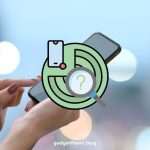Top Security Tips: Find My iPhone
Introduction
The Find My iPhone feature is a powerful tool that can help locate, lock, and even erase your Apple device remotely. However, to fully leverage its capabilities, it’s essential to adopt best practices to enhance security. In this guide, we’ll outline key security tips for using Find My iPhone, from basic setup to advanced features like two-factor authentication and Activation Lock. Let’s explore how to keep your device secure and maximize Find My iPhone’s potential.
1. Enable and Secure Activation Lock
Activation Lock is automatically enabled when you turn on Find My iPhone, ensuring that your device cannot be erased or reactivated without your Apple ID and password. This is a vital security feature for keeping your data safe from unauthorized access.
Steps to Ensure Activation Lock is Enabled:
- Open the Settings app.
- Tap [Your Name] > Find My.
- Select Find My iPhone and ensure it is toggled on.
Benefits:
- Deter Theft: Activation Lock prevents unauthorized use of your device.
- Data Protection: Your device remains locked even if it is reset.
2. Use Strong Apple ID Passwords and Enable Two-Factor Authentication
To prevent unauthorized access to Find My iPhone, use a strong Apple ID password and enable two-factor authentication (2FA).
Tips for Creating a Strong Password:
- Use at least 12 characters, including a mix of uppercase, lowercase, numbers, and symbols.
- Avoid common words and personal information.
How to Enable Two-Factor Authentication:
- Open Settings and tap [Your Name].
- Tap Password & Security.
- Select Turn On Two-Factor Authentication and follow the prompts.
Benefit: 2FA provides an extra layer of security by requiring a verification code in addition to your password.
3. Enable ‘Send Last Location’
When your iPhone’s battery is critically low, Send Last Location will automatically send its last known location to Apple. This can be invaluable for locating a lost or stolen device.
How to Enable It:
- Go to Settings > [Your Name] > Find My > Find My iPhone.
- Toggle on Send Last Location.
4. Keep Your iOS Updated
Regular updates from Apple include security patches and improvements. Keeping your device updated ensures that Find My iPhone runs smoothly and securely.
How to Check for Updates:
- Go to Settings > General > Software Update.
- Tap Download and Install if an update is available.
Tip: Turn on automatic updates to ensure you’re always using the latest version.
5. Beware of Phishing Scams
Phishing scams may attempt to steal your Apple ID credentials by posing as Apple Support or other trusted entities. Always be cautious of unsolicited emails or messages asking for your password.
Tips to Avoid Phishing Scams:
- Verify URLs: Only trust URLs that start with apple.com.
- Avoid Sharing Personal Info: Apple will never ask for your password or verification codes via email.
- Be Skeptical of Urgency: Messages creating a sense of urgency may be scams.
Report phishing attempts to reportphishing@apple.com.
6. Set Up Family Sharing for Added Security
With Family Sharing, you can manage and track devices for all family members. This feature allows you to easily locate their devices and assist in case of loss or theft.
How to Set Up Family Sharing:
- Go to Settings > [Your Name] > Family Sharing.
- Follow the prompts to add family members.
Tip: Family Sharing makes it easy to track multiple devices and help secure loved ones’ Apple devices.
7. Log Out and Remove Devices When Necessary
When you’re no longer using a device or are planning to sell it, make sure to log out of your Apple ID and remove the device from your account. This prevents future access or tracking through Find My iPhone.
How to Remove a Device from Your Account:
- Go to Settings > [Your Name] > Find My.
- Select the device and tap Remove from Account.
Removing unused devices from Find My iPhone reduces security risks associated with unauthorized access.
8. Customize Lost Mode Messages
If your iPhone is lost, Lost Mode allows you to lock it with a custom message on the lock screen. This can increase the chances of someone returning your device.
Tips for Creating an Effective Lost Mode Message:
- Be clear and concise.
- Provide a contact number or email address.
Example Message: “Lost iPhone. If found, please call [Your Number].”
9. Securely Store Your Apple ID and Password
Your Apple ID is the key to Find My iPhone. Use a trusted password manager to store and manage your credentials securely.
Comparison of Secure Storage Methods
| Storage Method | Security Level | Notes |
|---|---|---|
| Password Manager | High | Encrypted and controlled access |
| Notes App (unlocked) | Low | Easily accessible if device is lost |
| Physical Copy | Medium | Must be stored in a safe location |
10. Enable Find My Network for Offline Tracking
The Find My Network allows you to locate your iPhone even if it’s offline by using nearby Apple devices to relay its location.
How to Enable It:
- Open Settings > [Your Name] > Find My > Find My iPhone.
- Toggle on Find My Network.
This feature makes your device discoverable even without an internet connection.
11. Find My iPhone Security Tips (FAQs)
Q: Can I track my iPhone without internet access?
A: Yes, if Find My Network is enabled, nearby Apple devices can relay its location even if it’s offline.
Q: How do I protect my Apple ID from phishing attempts?
A: Be wary of unsolicited messages and verify URLs. Use two-factor authentication for added security.
Q: Can I use Family Sharing to locate a family member’s iPhone?
A: Yes, Family Sharing allows you to track devices with their permission.
Conclusion
Maximizing the security of your device with Find My iPhone requires more than just enabling the feature. By following these top security tips, such as using strong passwords, customizing Lost Mode messages, and keeping your device updated, you can enhance your iPhone’s protection and increase the chances of recovery. For more insights on keeping your Apple devices safe, explore our related guides.



